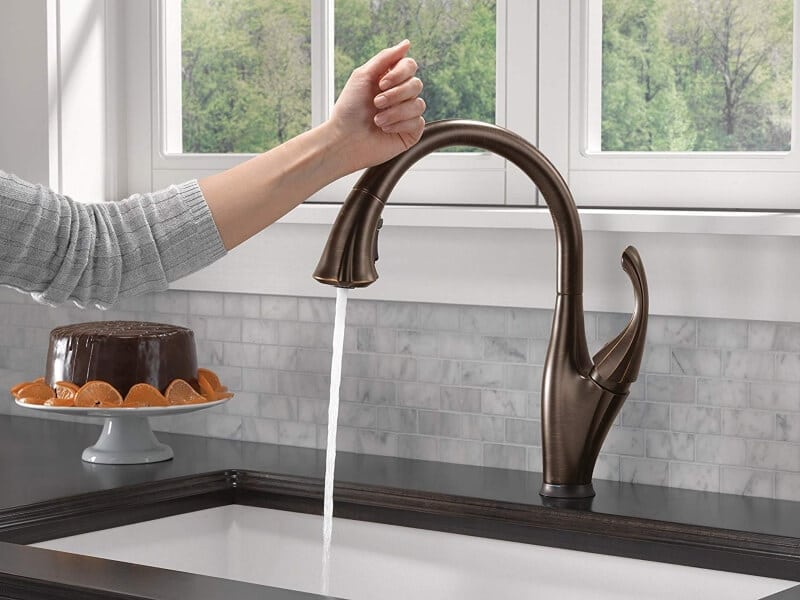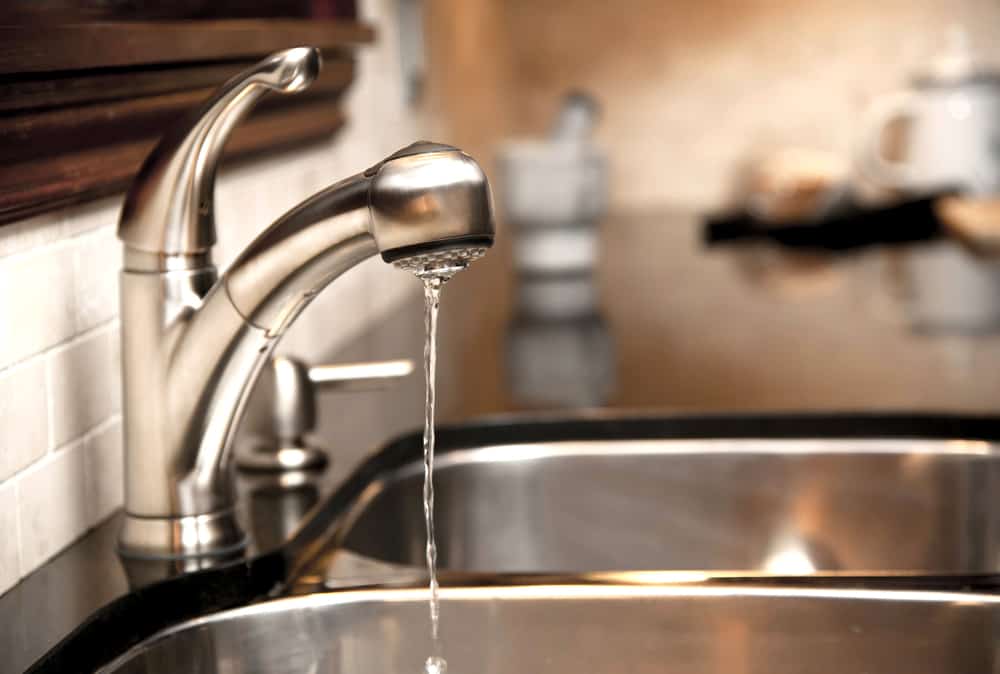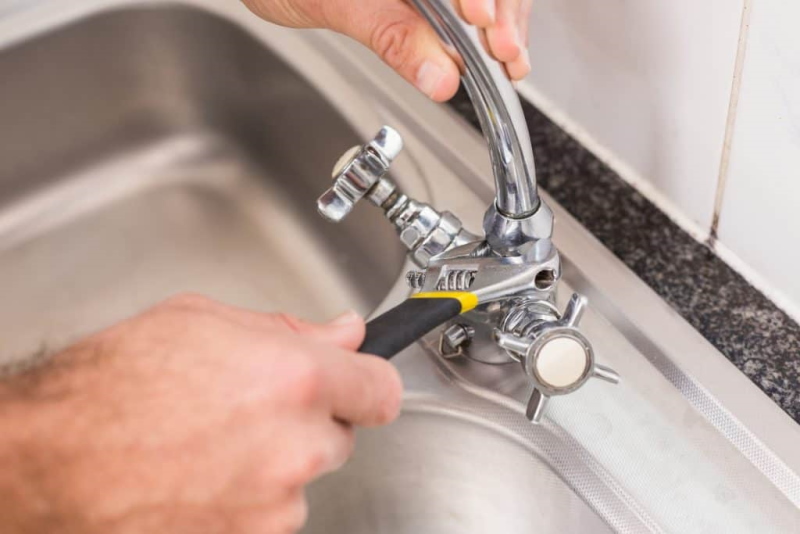A large portion of investment goes into making kitchen comfy, idyllically warm yet practical. The work triangle, where the sink area is located, is considered the heart of the kitchen. Here food preparation and cleaning are done. There are assorted types of kitchen faucets, depending on factors such as material, configuration, and the general aesthetic.
Kitchen faucets come in various makes, sizes, and price ranges, catering to particular consumer needs with laser-like precision. The goal is to pick one which simplifies your tasks, saving you time and energy. With the superfluity of hardware brands in the industry today, it can be quite daunting settling on the faucet that meets your functional and design requirements.
Several vital factors will influence your decision; cost, functional requirements, kitchen design, and aesthetics. To get the maximum benefit out of your investment, it’s best to get acquainted with the pros and cons of each type of kitchen faucet. You will also find it helpful to familiarize yourself with the different types of components used to make the faucets and how to assemble them.
Walking into any hardware store will have you realize that there are endless varieties of kitchen faucets. All with different designs to serve different purposes. Their categories are according to their control mechanism, functioning, and layout. Present-day advancements in technology have facilitated the development of additional mind-blowing features of conventional kitchen faucets.
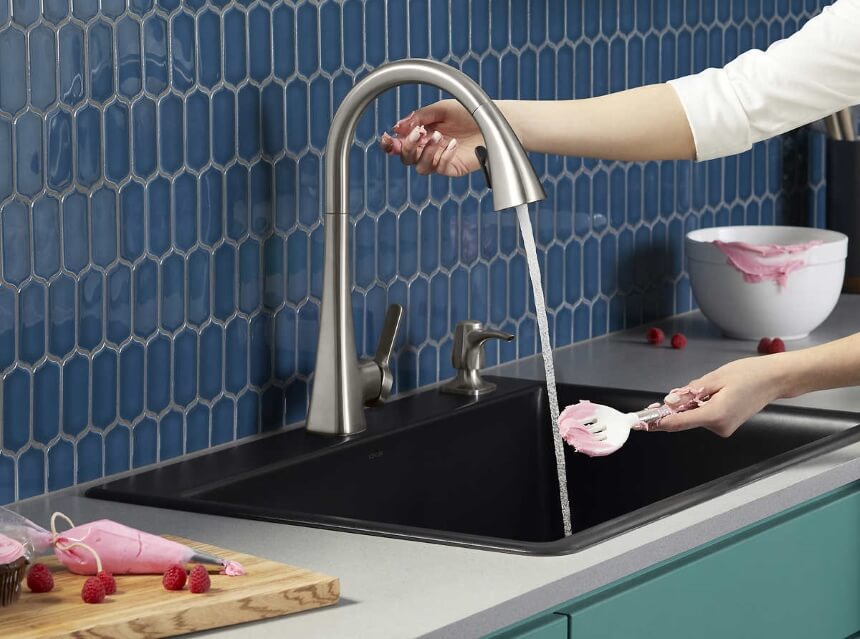
Besides functionality, touchless kitchen faucets are very chic, perfect for the minimalist style enthusiasts.
A notable mention is the Moen 7594ESRS Arbor. Many reviews credit it as the best touchless faucet within the market at the moment, highly advanced, sleek, and sophisticated.
On the flip-side, this faucet is pricier than regular faucets. Unfortunately, due to it being activated by sensors, there are destined to be moments when it is unintentionally activated, for instance, by movements from pets. Touchless faucets are powered by electricity rendering them useless during power cuts. As a result, they may not be the best option for you if you frequently experience power outages. Some models hide the sensors towards the bottom or the back, making it hard to access when your hands are full or messy.
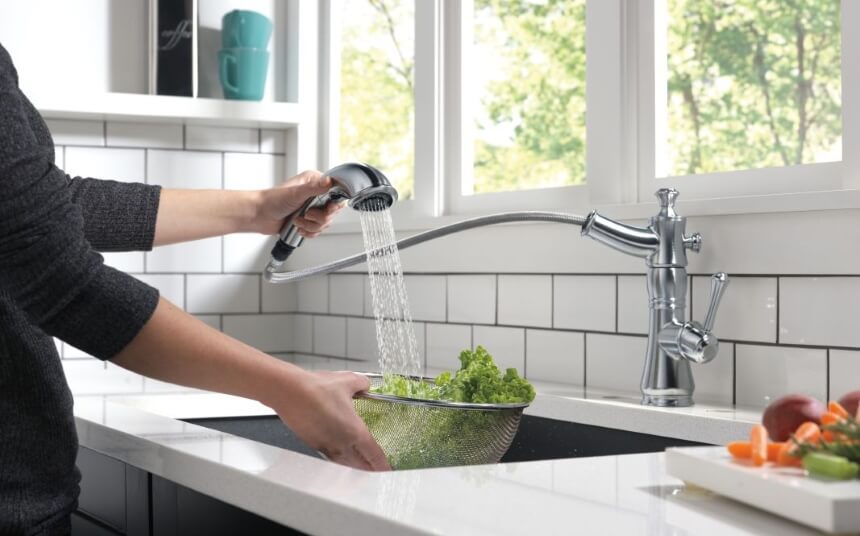
The shortcomings of this kitchen faucet are that it’s not useful in filling tall items on the sink, due to its short neck. Additionally, the pull-out faucet is not as aesthetically pleasing as the other faucets in the market.
On the other hand, the pull-down faucet’s adjustability makes it a game changer. This brand of kitchen faucet is prevalent as it allows one to get water into every corner of the sink, simplifying tasks like cleaning. An additional fact is that it allows you to adjust the faucet height to your convenience. Its long neck and elegant arch are other wins, especially for those with an affinity for modern styles. The installation will require you a lot of room to spare, to accommodate its high neck. The retractable pull-down hose situated under the sink is also long and demands additional space.
Though this faucet allows for a varying range of flexibility, it does not offer the same wide range of motion that the pull-out faucet provides. Besides, this type of faucet may not be convenient for homeowners with small sinks.
For instance, the Franke FFPD4350 Pescara is credited as one of the best single handle pull down kitchen faucets currently in the market.

However, the single-lever is disadvantageous because it is often difficult to set precise temperatures, moving from one extreme to the other. Thus it takes more time to achieve your desired water temperature.
The double handle faucet is the most conventional among the kitchen faucets listed. It features two separate handles, each attached centrally to the faucet. This is handy because it serves as a safety precaution, especially for children. It allows them to differentiate the hot from cold handles, reducing the risk of accidents at home. Some double handle faucets incorporate the two handles, but a few inches from each other, just adjacent to the main tap. Double handle faucets enable precision in temperature control through the distinct temperature handles.
However, they are more challenging to install compared to the single handle faucet.
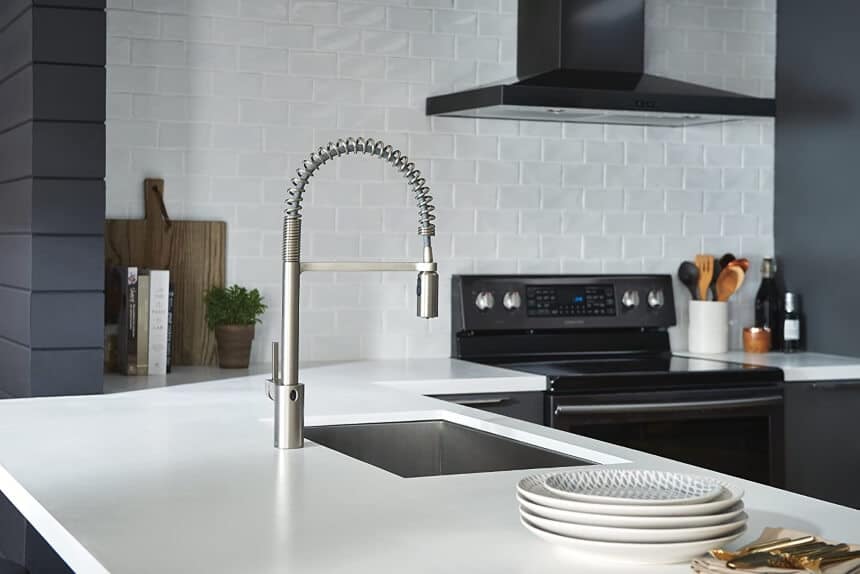
These kitchen faucets use a more comprehensive, flexible approach to create an ultramodern appearance in the kitchen. It is a sturdy faucet often used by professional chefs and kitchen connoisseurs. With different models available, the one you select can come with multiple taps for different needs. If you are looking to become a serious cook, then this is the kitchen faucet for you.
Fortunately, there are numerous options to choose from when it comes to commercial kitchen faucets, which makes it harder to decide. Also, they are quite pricey compared to other faucets.
These are unique faucets with a characteristic long and thin spout perfect for filling deep pots and basins. Pot fillers are usually used in industrial level kitchens because they prevent and reduce cases of back strain. The Pot fillers are perfect for high volume and pressure action, not provided by the regular kitchen faucets. Consequently, most pot filler faucets fill larger and taller containers than regular ones since they pour more water per gallon. They are especially useful for bustling kitchens where time is a precious commodity.
The pot filler faucets are mounted on the wall above the stove due to their hinged, articulated neck. Their unique design allows them to reach out further over the sink and can be folded back against the wall for storage. However, pot filler faucets require professional installation. Their unique arm extension allows movement outwards, allowing it to reach over a pot in the sink.
Installation requires they be mounted on a wall or deck. Keep this in mind when making the purchase to ensure compatibility with your kitchen’s design. These faucets eliminate the struggle of carrying heavy pots to and fro the sink. They also make it easier to draw water from the tap without having to walk to the sink. Remember to acquire a faucet with an extended swivel arm that allows you to fill more pots. It should be adjustable to enable folding against the wall when not in use.
These pot filler faucets are rarely used for everyday kitchen tasks. What they make up for in accessibility and efficiency, they lack in aesthetic value. And the installation without professionals can be quite tricky:
This type of kitchen faucet allows change in appearance. The separate spray faucet makes them suitable for those looking for a more flexible design. These kitchen faucets offer matching side sprays in the same style as the faucet itself. They are a significant addition to your kitchen, especially useful during cleanup. Its side sprays are smaller than regular types, making it easier to control the water spray.
The faucet comes with a separate handle and a trigger that averts water flow to the spray nozzle. The handle is linked to the principal water supply from the tap. The spray nozzle redirects water to the spout, activating when you turn on the regular tap, as water is redirected to the spout quickly. This feature makes it excellent for cleaning minor items in the kitchen. You can even have it installed on the side of an ordinary faucet and function alongside them. Some consumers prefer it over the pull-out and pull-down faucets, allowing them to spray water to the sink. There are a plethora of attractive and aesthetically pleasing models to choose from. Faucets with separate sprayers are great value for money, providing convenience and maintaining style in the kitchen.
When purchasing a kitchen faucet, it is vital to factor in the materials used in its manufacture. Different finishes have their advantages in cost, resilience, and design. Since faucets are subject to wear and tear, you need to select one that is both durable and convenient. Experts advise that when choosing a faucet, the faucets’ finishing should match with the finishing on the kitchen. Due to their frequent contact with water, the faucets use corrosion-resistant materials during manufacturing. Below are some of the most commonly used materials.
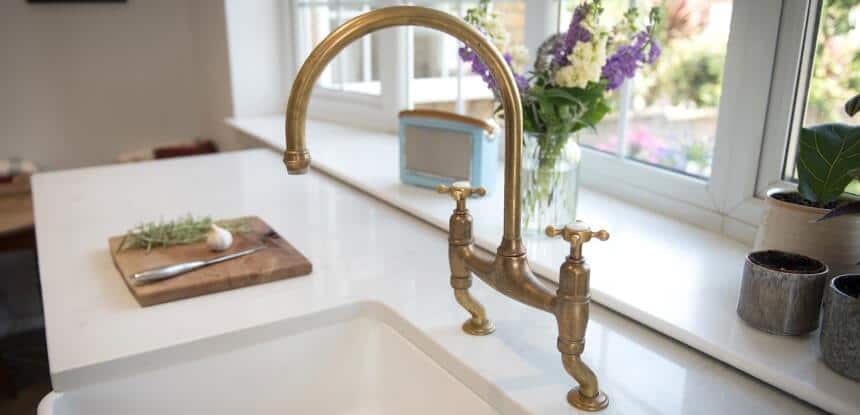
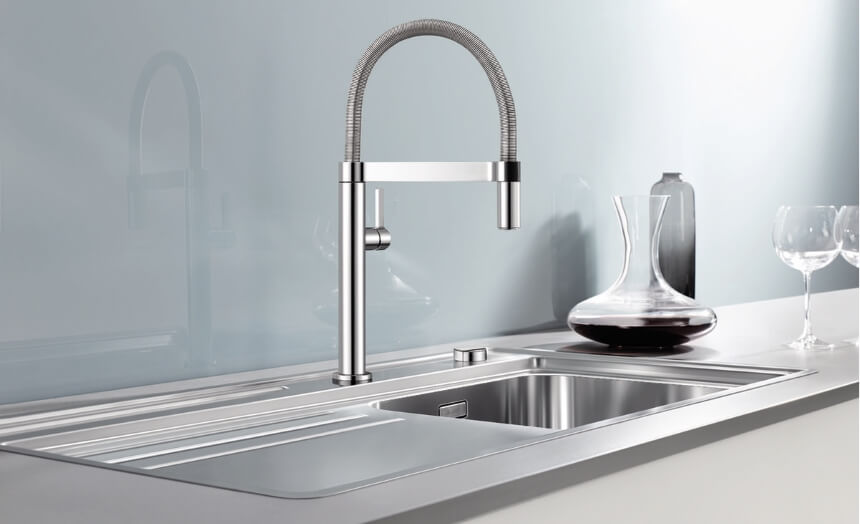
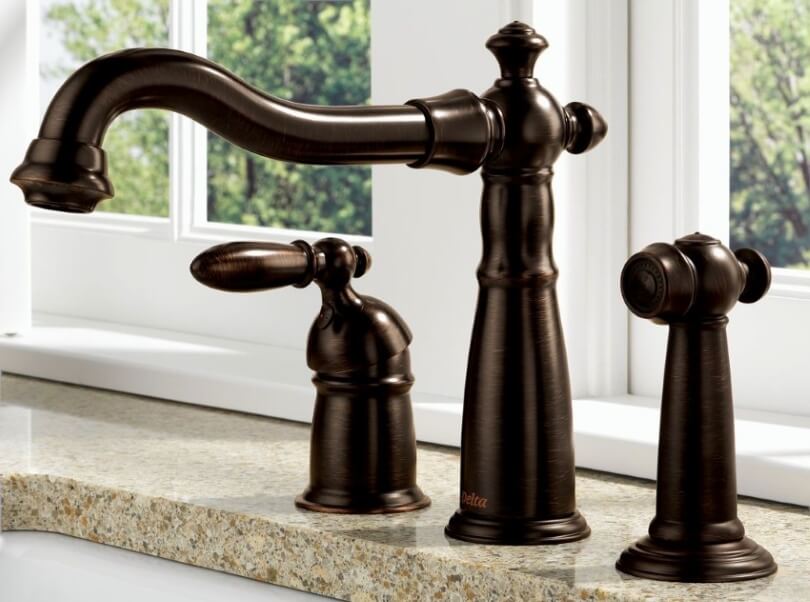
Plastic is the least durable of all faucet materials since it can break easily. It also happens to be the most inexpensive of kitchen faucets on the market. The spigot made of plastic is cheaper and smooth and can be available in different colors. It is the only faucet not to contain lead, making it environmentally friendly. However, it won’t look as refined as other options unless it blends with other materials. The best plastic-type for faucets is one made of cross-linked polyethylene, commonly referred to as PEX, since it is the best-suited material for water channels. It is much better than copper because it’s more affordable and easier to install. They are resilient to bursting from freezing. If longevity is top on your list of requirements, then plastic-made faucets aren’t the best option for you.
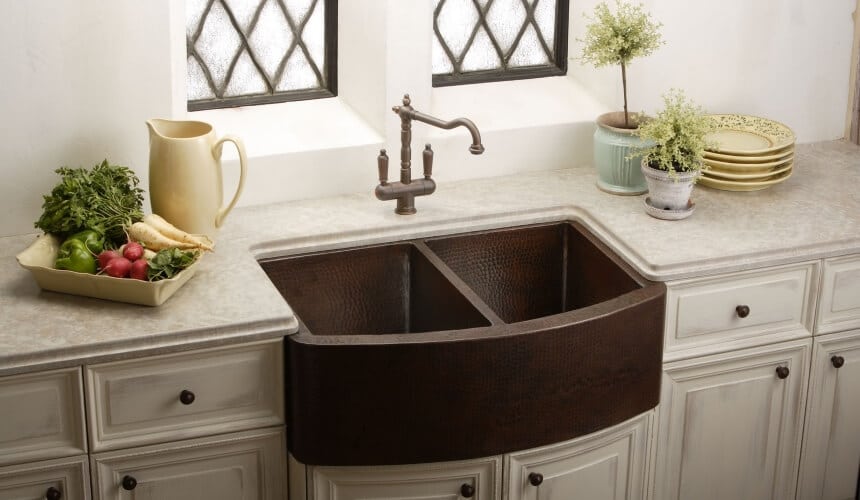

It’s important to consider the mounting style, when purchasing kitchen faucets. The most common mounting options are deck plate, non-deck plate, and wall-mounted. This is especially important if you are placing a new faucet on a previously existing countertop or sink. Kitchen faucets have anywhere between one and five holes, based on the number and layout of handles, spouts, and other faucet accessories.
Take note of the number of holes on the sink or countertop so you can filter through the many options easily. Where some holes may remain unused, you could use sink hole covers.
The faucet installation considers several factors, such as the number of holes you need to drill into the counter before installing the sink. A majority of new faucets take up just one spot. Another factor is the location of installation.
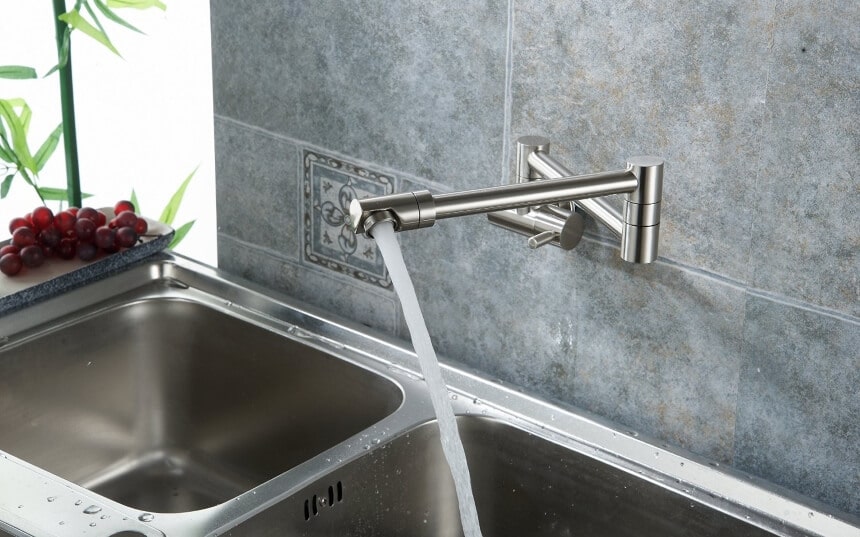
Mounting a tap on the wall clears countertop space, making cleaning even more effortless. With the vertical space, you can place larger kitchen vessels.
Wall-mounted faucets have one disadvantage, they require extra care and attention, especially in frigid climates, to prevent water from freezing in the pipes.

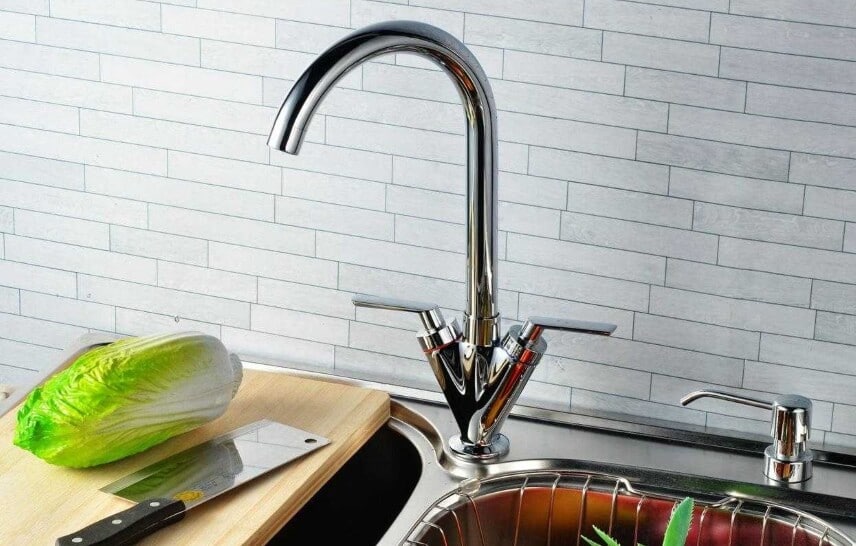
This type of mounting is excellent for when you want to switch faucets but still reuse the existing sink. Despite this exciting fact, your faucet style options will be limited to the sink’s compatibility.
There are numerous types of kitchen faucets, however, various factors have to be considered when finalizing the purchase. Given the costs involved, prior research comes in handy as it helps you establish the faucet most compatible with your kitchen’s layout.
The faucet is an item you will own for a long time; hence you need to ensure it perfectly suits your aesthetic and functional needs. It is advised to consult a contractor to help with installation for a neater, wholesome finished look.
